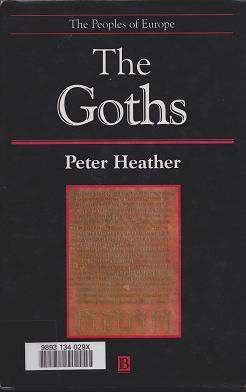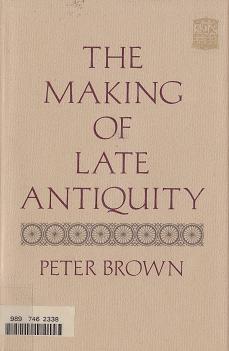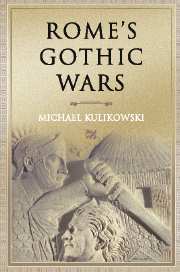
The Later Roman Empire
Averil Cameron
238 pages including index
published in 1993
As you may have noticed if you’re a regular reader of my booklog, is that I’ve developed a mild obsession with Late Antiquity and the Roman Empire, fueled by the two excellent books I got out of the library last year, Peter Heather’s The Fall of the Roman Empire and Bryan Ward-Perkins’ The Fall of Rome. Before that I’d only read about Rome in a few history lessons at school, a couple of popular history books for kids and a shedload of Asterix comics, all of which emphasised the early days of Rome, up until Caesar and Augustus, with perhaps a bit of Nero thrown in. Everything after the first century CE was largely ignored or at best only mentioned briefly; the later centuries of the Roman Empire are seen as an afterthought, a long slide into barbarism ala Edward Gibbon.
Yet if you start reading more academic treatments of Roman history, you soon discover that this view has long been abandonded, ever since the publication of Peter Brown’s The World of Late antiquity in 1971. That was the first popular book to do away with the idea of the dark ages, re-emphasising the continuity between the Christianised empire of the third century CE and the Early Middle Ages, as well as the continuing survival of the Eastern Empire centered around Byzantium, as opposed to the Western Empire’s breakup. Averil Cameron’s The Later Roman Empire is one product of this re-emphasis. Published in 1993 as a volume in the Fontana History of the Ancient World, it shows that the view put forth by Peter Brown has won mainstream acceptance. It is meant as a standard textbook on the late Roman Empire, because none such was yet written in English, as the preface explains.
As a textbook The Later Roman Empire gives a largely chronological overview of the late Roman Empire, starting with the rule of Diocletian in 284 CE and ending with Theodosius, the last emperor to rule both the Western and the Easterns halves of the Roman Empire. This is largely a political and military history, with the emphasis on how the Roman state survived the turmoils of the third century and consolidated itself in the early fourth century and subsequent rise of Byzantium as alternative power centre to Rome. One important aspect of this evolution is the relationship between the Roman state and Christianity, which from the time of Constantine became the official state religion. This had of course an incredible impact on the further development of the empire, both strenghten it, giving it more cohesion, but also leading to dangerous rifts due to the differences in doctrine between the various streams of Christianity in existence then. The last few chapters abandon the chronological approach for a look at the late empire in general, examining its economy, society, culture and the way the army was changing in coming to terms with the threat of barbarian invasion. Again, the role of Christianity is given special attention in these chapters.
What Averil Cameron attempts to show in this book is the continuity of the Roman Empire, both in the problems engulfing it in the third century, as in the ways it survived into the fourth and fifth century CE, and even after it had officially fallen. In sketching her view of the fourth century, Cameron shows both, as she puts it, “the resilience of the Roman imperial systems and the inertia of pre-modern society. If she shows that many of the supposedly unique problems of the late Roman Empire had been present much earlier, she also shows the failure of the Empire to deal with them: it manages to survive and consilidate, but it’s a precarious survival and it only takes a bad run of luck for the western empire to largely be destroyed at the end of the fourth century. At the same time, she continues to emphasise the ways in which major portions of the empire did survive and indeed thrive in the east.
The Later Roman Empire gives a good overview of a period of history I until recently knew little about, but I have to admit it was a little bit too dry for me. This is partially due to the attention paid to Christianity and its response to the changes in the world surrounding it, it’s adaptation to becoming a state religion and the various crisises it underwent during this adaptation. It’s not a subject that interests me greatly to be honest, but it is central to this book. It made for some difficult reading at times, but on the whole this was another interesting look at the late Roman Empire.




